When it comes to industrial catalytic reactions, platinum-group metals (PGMs) rule.
From oil refining to automobile pollution-control devices to the bulk of pharmaceuticals, PGMs are the go-to choice to interact with other substances and facilitate chemical reactions. It’s been that way for decades. PGMs boast thermal stability, ease-of-use in catalysis, and tolerance to chemical poisons. Perhaps the most prominent case in point is the widespread use of the precious metal palladium in the manufacturing of pharmaceuticals and electronic materials. The 2010 Nobel Prize in Chemistry, in fact, was awarded to the researchers credited with developing palladium-catalyzed cross coupling.
But there’s a PGM alternative. And for significant reasons, that alternative – Earth-abundant metals (EAMs) – holds the promise of offering a choice to rival PGMs.
EAM catalysts have been used more widely in recent years. But they’ve still lagged PGMs, in part, because of a lack of fundamental scientific knowledge about EAM’s potential, argues a research review published in Science.
Professor Robert Morris, a co-author of the review, has pioneered the use of cooperating ligands on iron to make enzyme-like catalysts for the asymmetric hydrogenation of ketones and imines. These are important processes in pharmaceutical synthesis that currently use rare platinum metals.
"The platinum metals make superb catalysts due to their 'Goldilocks' chemical properties and were the easiest to find by researchers for processes such hydrogenation, fuel cell manufacturing, hydrogen production by the electrolysis of water," says Morris.
"So they became the conventional catalysts in use today. However they are the rarest elements in the earth’s crust and their use is not sustainable."
In addition to the Morris group, the department has many exciting research efforts in EAM catalysis, both for sustainable energy storage and generation (the Voznyy and Ozin groups) and for organic synthesis with applications in the pharmaceutical and fine chemical industry (the Song, Rousseaux and Lautens groups).
EAM catalysts have been used more widely in recent years. But they’ve still lagged behind PGMs, in part, because of a lack of fundamental scientific knowledge about EAM’s potential.
EAMs have several attributes compared to PGMs. As its name suggest, there’s a lot of EAMs in the world. There’s as many as 10,000 times more EAMs than PGMs, and that translates to extraction and production costs that are similarly less for EAMs.
And while palladium, with its Nobel Prize credentials, is a shining example of PGMs’ industrial production track record, it also has no peer in terms of cost. Commodity markets this year have priced palladium at more than $2,000 an ounce. On top of that, palladium is mined in an extremely limited number of locations globally, none of which are in the United States or its territories.
EAMs, sometimes called base metals, are less toxic than their PGM cousins. Also, the abundance of EAMs generally leads to a lower environmental footprint associated with mining and purification compared to PGMs. For example, the Science review notes the production of a kilogram of the platinum group’s rhodium generates the equivalent of more than 35,000 kilograms of carbon dioxide. The CO2 production of a kilogram of EAMs’ nickel? About 6.5 kilograms. Also, rhodium costs almost as much per ounce as pricey palladium while nickel is less than $7 per pound.
Granted, a metal’s extraction cost is only part of the equation. PGMs continue to be the prevalent choice in many industrial catalytic processes because their inherent properties make them the best metal for the job, the review notes. It points to the appeal of corrosion-resistant PGMs in fuel cells as well as the ideal high-temperature suitability of platinum, rhodium, and palladium in automobiles’ catalytic converters.
The review article, titled, “Using nature’s blueprint to expand catalysis with Earth-abundant metals,” suggests researchers look outside the laboratory for clues in designing new catalysts using EAMs for chemical reactions.
"Nature’s enzymes contain iron and nickel for hydrogenation and carbon dioxide fixation and manganese, iron and copper for carbon dioxide hydrogenation and oxygen evolution," says Morris.
"So a key area of research now is making these abundant elements not only replacements for rare metals in existing chemical processes but also finding ways to make better catalysts with abundant metals to solve some of the big problems we are now facing, particularly carbon dioxide pollution of the atmosphere. Finding inspiration in nature has accelerated discoveries in this effort."


